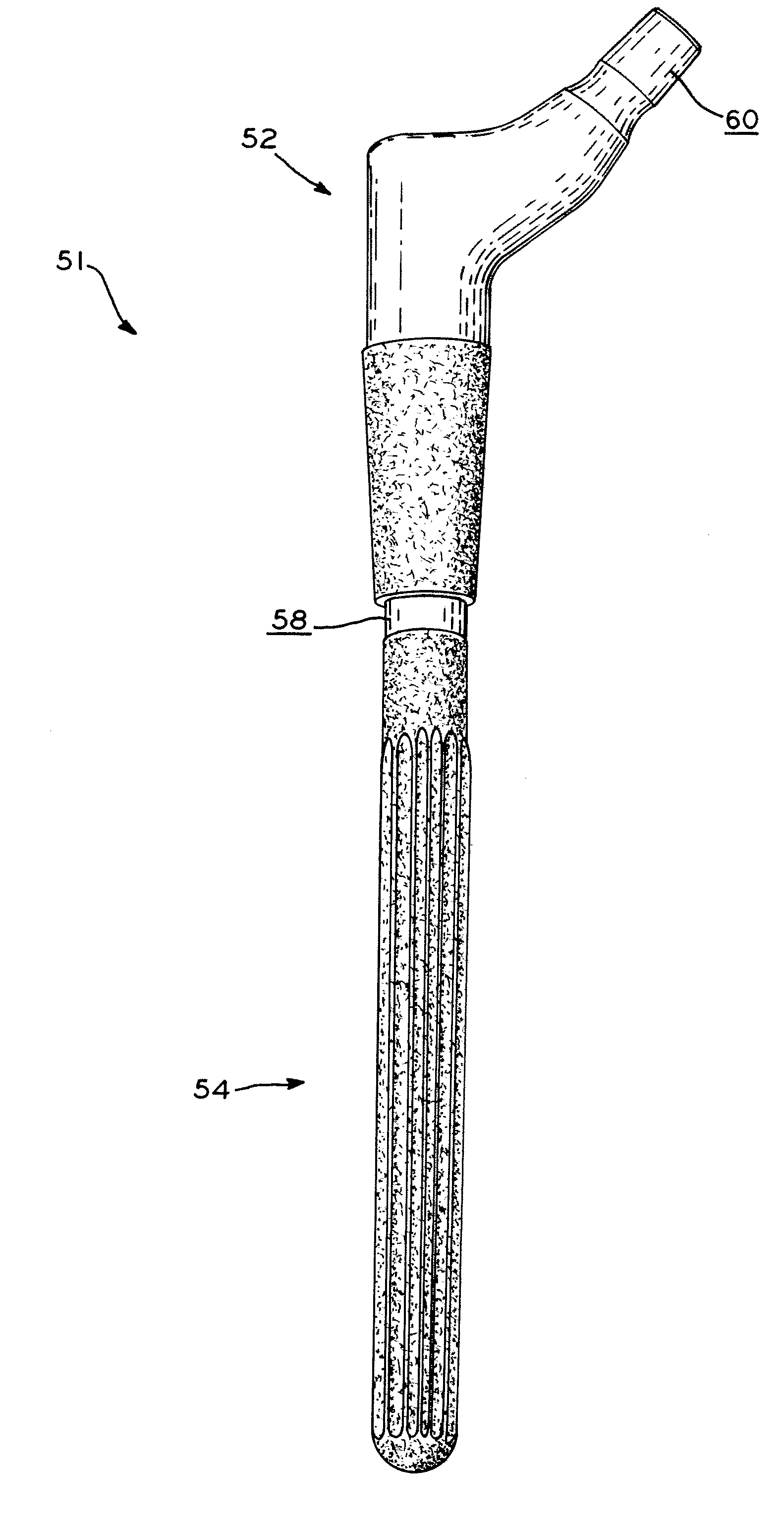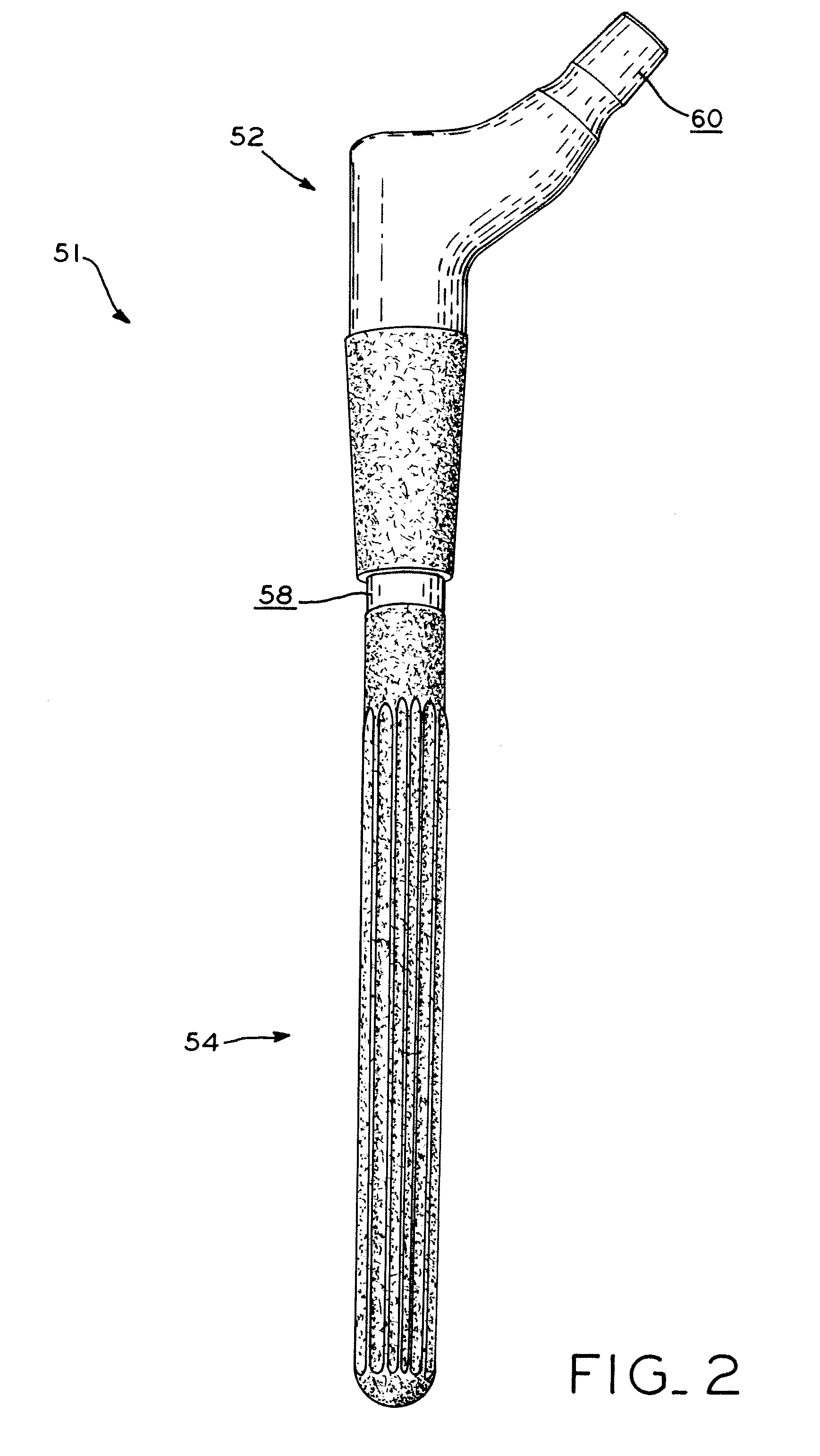Method for enhancing fretting fatigue resistance of alloys
a technology of alloys and fretting fatigue, applied in the direction of metallic material coating process, solid-state diffusion coating, coating, etc., can solve the problems of increasing the alloy's fretting fatigue resistance, shortening the useful life of the prosthesis, and washed away the ablated surface material, so as to reduce the size of the orthopedic component, reduce the cost, and improve the effect of the design of the orthopedic componen
- Summary
- Abstract
- Description
- Claims
- Application Information
AI Technical Summary
Benefits of technology
Problems solved by technology
Method used
Image
Examples
example
[0030]The following non-limiting Example illustrates various features and characteristics of the present invention, which is not to be construed as limited thereto. The following abbreviations are used throughout the Example unless otherwise indicated.
TABLE 1AbbreviationsAbbreviationFull WordFFahrenheit°degreeHzHertzNNewtonKHN10 gKnoop HardnessGWgigawattcmcentimeterNdNeodymiumTiTitaniumAlAluminumVVanadiumkbarkilobar
Fretting Fatigue Tests of Modular Components with Improved Surface
[0031]Wrought mill annealed Ti-6Al-4V ELI titanium alloy (ASTM F-136-02A) bar stock was obtained from Supra Alloys, Inc., of Camarillo, Calif. The alloy bar stock was formed into ten complete, modular hip stems each having a mid-stem Morse taper. The modular hip stems that were formed were similar to hip stems available in the ZMR® Hip System, commercially available from Zimmer, Inc., of Warsaw, Ind. “ZMR” is a registered trademark of Zimmer, Inc., of Warsaw, Ind. Each of the modular components that form th...
PUM
| Property | Measurement | Unit |
|---|---|---|
| temperature | aaaaa | aaaaa |
| temperature | aaaaa | aaaaa |
| temperature | aaaaa | aaaaa |
Abstract
Description
Claims
Application Information
 Login to View More
Login to View More - R&D
- Intellectual Property
- Life Sciences
- Materials
- Tech Scout
- Unparalleled Data Quality
- Higher Quality Content
- 60% Fewer Hallucinations
Browse by: Latest US Patents, China's latest patents, Technical Efficacy Thesaurus, Application Domain, Technology Topic, Popular Technical Reports.
© 2025 PatSnap. All rights reserved.Legal|Privacy policy|Modern Slavery Act Transparency Statement|Sitemap|About US| Contact US: help@patsnap.com



